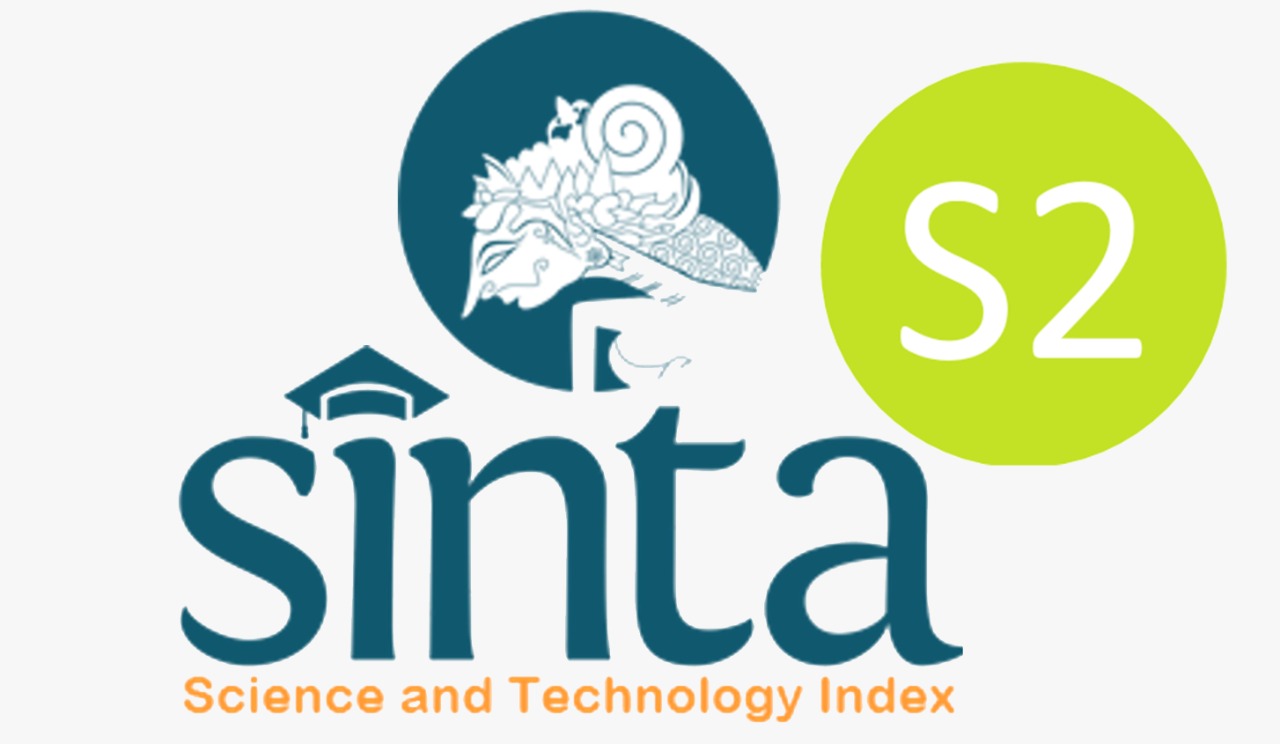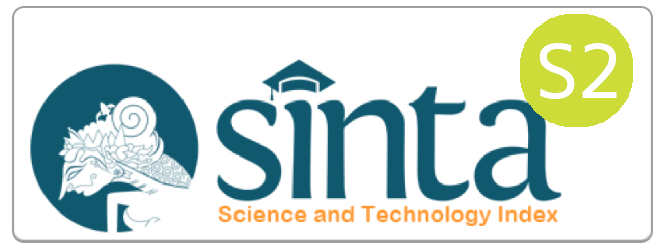THE ENIAPEL BOTTOM LINE MODEL AND NATURAL TOURISM MARKETING: A MIXED METHODS STUDY OF GOSARI VILLAGE
Downloads
Introduction: This study aims to analyze the relationship between economy, fishermen, inclusion, nature, empowerment, ecology, and local variables in the context of natural tourism development in Gosari Village, Ujungpangkah District, Gresik Regency, part of the minapolitan zone. Understanding these variables’ effects is essential for improving the sustainability and operational efficiency of Gosari Village as a tourism destination.
Methods: A quantitative approach was employed through questionnaires administered to 106 respondents from various stakeholders, including Village-Owned Enterprises (BUMDes), POKDARWIS, MSMEs, and government entities. The collected data were processed using PLS 4.0. Additionally, a phenomenological study using in-depth interviews was conducted to capture the social experiences of fishing communities in Gosari Village. This dual approach provided a comprehensive understanding of the area’s tourism development dynamics.
Results: The results show that fishermen significantly influence inclusion, ecology, and economy, but not empowerment. Nature is found to have a significant effect on empowerment and ecology, but not on inclusion and economy. Local variables have a significant influence on empowerment, ecology, and economy, but not on inclusion.
Conclusion and suggestion: This study highlights the significant roles of fishermen, nature, and local variables in the development of natural tourism in Gosari Village, with varying impacts on inclusion, ecology, empowerment, and the economy. To enhance sustainability and operational efficiency, it is recommended to focus on digital marketing, human resource development, diversification of funding sources, the application of technology, and local empowerment policies. Additionally, the ENIAPEL Bottom Line Model is proposed as a strategy to maintain a balance between environmental, social, and economic aspects for sustainable tourism growth in the village.
Abbass, K., Qasim, M. Z., Song, H., Murshed, M., Mahmood, H., & Younis, I. (2022). A review of the global climate change impacts, adaptation, and sustainable mitigation measures. Environmental Science and Pollution Research, 29(28), 42539–42559. https://doi.org/10.1007/s11356-022-19718-6
Chou, S.-F., Horng, J.-S., Sam Liu, C.-H., & Lin, J.-Y. (2020). Identifying the critical factors of customer behavior: An integration perspective of marketing strategy and components of attitudes. Journal of Retailing and Consumer Services, 55, 102113. https://doi.org/10.1016/j.jretconser.2020.102113
Cohen, G. L., & Sherman, D. K. (2014). The Psychology of Change: Self-Affirmation and Social Psychological Intervention. Annual Review of Psychology, 65(1), 333–371. https://doi.org/10.1146/annurev-psych-010213-115137
Conroy, M. J., & Peterson, J. T. (2013). Decision Making in Natural Resource Management: A Structured, Adaptive Approach. Wiley. https://doi.org/10.1002/9781118506196
Dar, S. A., & Sakthivel, Dr. P. (2022). Maslow’s Hierarchy of Needs Is still Relevant in the 21st Century. Journal of Learning and Educational Policy, 25, 1–9. https://doi.org/10.55529/jlep.23.1.9
Esau, I., Bobylev, L., Donchenko, V., Gnatiuk, N., Lappalainen, H. K., Konstantinov, P., Kulmala, M., Mahura, A., Makkonen, R., Manvelova, A., Miles, V., Petäjä, T., Poutanen, P., Fedorov, R., Varentsov, M., Wolf, T., Zilitinkevich, S., & Baklanov, A. (2021). An enhanced integrated approach to knowledgeable high-resolution environmental quality assessment. Environmental Science & Policy, 122, 1–13. https://doi.org/10.1016/j.envsci.2021.03.020
Fernandez, S., & Moldogaziev, T. (2015). Employee Empowerment and Job Satisfaction in the U.S. Federal Bureaucracy. The American Review of Public Administration, 45(4), 375–401. https://doi.org/10.1177/0275074013507478
Garrick, A., Johnson, W. D., & Arendt, S. W. (2024). Breaking Barriers: Strategies for Fostering Inclusivity in The Workplace. International Journal of Academic Research in Business and Social Sciences, 14(2). https://doi.org/10.6007/IJARBSS/v14-i2/20799
Gkikas, D. C., & Theodoridis, P. K. (2022). AI in Consumer Behavior In: M. Virvou, G.A. Tsihrintzis, L.H. Tsoukalas & L.C. Jain, (eds), Advances in Artificial Intelligence-based Technologies. Learning and Analytics in Intelligent Systems, vol 22. (pp. 147–176). Cham: Springer. https://doi.org/10.1007/978-3-030-80571-5_10
Goethel, D. R., Omori, K. L., Punt, A. E., Lynch, P. D., Berger, A. M., de Moor, C. L., Plagányi, É. E., Cope, J. M., Dowling, N. A., McGarvey, R., Preece, A. L., Thorson, J. T., Chaloupka, M., Gaichas, S., Gilman, E., Hesp, S. A., Longo, C., Yao, N., & Methot, R. D. (2023). Oceans of plenty? Challenges, advancements, and future directions for the provision of evidence-based fisheries management advice. Reviews in Fish Biology and Fisheries, 33(2), 375–410. https://doi.org/10.1007/s11160-022-09726-7
Hansen, A. J., DeFries, R. S., & Turner, W. (2012). Land Use Change and Biodiversity. In: G. Gutman, A.C. Janetos, C.O. Justice, E. F. Moran, J.F. Mustard, R.R. Rindfuss, D. Skole, B.L. Turner & M.A. Cochrane (eds), Land Change Science. Remote Sensing and Digital Image Processing, vol 6. (pp. 277–299). Dordrecht: Springer. https://doi.org/10.1007/978-1-4020-2562-4_16
Jiang, Y., Abdullah, S. I. N. W., Lim, B. H. J., Wang, R., & Phuah, K. T. (2023). The role of marketing stimuli and attitude in determining post-COVID buying decisions toward organic food products: evidence from retail consumers in Beijing, China. Frontiers in Sustainable Food Systems, 7. https://doi.org/10.3389/fsufs.2023.1051696
Lankau, R., Jørgensen, P. S., Harris, D. J., & Sih, A. (2011). Incorporating evolutionary principles into environmental management and policy. Evolutionary Applications, 4(2), 315–325. https://doi.org/10.1111/j.1752-4571.2010.00171.x
Lee, B. T. F., & Sims, J. P. (2024). Redefining Regional Development: The Case for an ASEAN Development Bank. Journal of Political Issues, 6(1), 1–19. https://doi.org/10.33019/jpi.v6i1.160
Leiser, D., & Azar, O. H. (2008). Behavioral economics and decision making: Applying insights from psychology to understand how people make economic decisions. Journal of Economic Psychology, 29(5), 613–618. https://doi.org/10.1016/j.joep.2008.08.001
Lu, C., Wu, Y., Shen, Q., & Wang, H. (2013). Driving force of urban growth and regional planning: A case study of China’s Guangdong Province. Habitat International, 40, 35–41. https://doi.org/10.1016/j.habitatint.2013.01.006
Nagyová, Ľ., Géci, A., & Horská, E. (2020). Consumer preferences and decision-making determinants for the purchase of sheep’s milk and its products. Potravinarstvo Slovak Journal of Food Sciences, 14, 673–681. https://doi.org/10.5219/1424
Nyamari, T. (2024a). Social Capital and Community Development. International Journal of Humanity and Social Sciences, 3(1), 14–27. https://doi.org/10.47941/ijhss.1890
Nyamari, T. (2024b). Social Capital and Community Development. International Journal of Humanity and Social Sciences, 3(1), 14–27. https://doi.org/10.47941/ijhss.1890
Osborne, M., & Rubinstein, A. (2020). Models in Microeconomic Theory. Open Book Publishers. https://doi.org/10.11647/obp.0204
Permatasari, A., Mapuasari, S. A., Yuliana, E., & Ahmad, N. F. (2020). The role of customer online review in the buying decision process of a digital tourism product: A conceptual framework. In: G. Anggadwita & E. Martini (eds), Digital Economy for Customer Benefit and Business Fairness (pp. 20–25). Routledge. https://doi.org/10.1201/9781003036173-4
Pike, A., Rodriguez‐Pose, A., & Tomaney, J. (2008). Local and Regional Development. Economic Geography, 84(2), 241–242. https://doi.org/10.1111/j.1944-8287.2008.tb00407.x
Rising, J. A., Taylor, C., Ives, M. C., & Ward, R. E. T. (2022). Challenges and innovations in the economic evaluation of the risks of climate change. Ecological Economics, 197, 107437. https://doi.org/10.1016/j.ecolecon.2022.107437
Scarano, F. R. (2017). Ecosystem-based adaptation to climate change: concept, scalability and a role for conservation science. Perspectives in Ecology and Conservation, 15(2), 65–73. https://doi.org/10.1016/j.pecon.2017.05.003
Schirpke, U., Ebner, M., & Tappeiner, U. (2024). Effects of climate-related environmental changes on non-material benefits from human-nature interactions: A literature review. Ecosystem Services, 69, 101650. https://doi.org/10.1016/j.ecoser.2024.101650
Shore, L. M., Randel, A. E., Chung, B. G., Dean, M. A., Holcombe Ehrhart, K., & Singh, G. (2011). Inclusion and Diversity in Work Groups: A Review and Model for Future Research. Journal of Management, 37(4), 1262–1289. https://doi.org/10.1177/0149206310385943
Thorson, E. (2023). Emotion in Processing Advertising and News. Journalism & Communication Monographs, 25(2), 181–192. https://doi.org/10.1177/15226379231167136
Copyright (c) 2025 Ida Bagus Cempena, Tri Ratnawati, Arga Christian Sitohang

This work is licensed under a Creative Commons Attribution-ShareAlike 4.0 International License.
Authors who publish with Jurnal Ekonomi dan Bisnis Airlangga agree to the following terms:The journal allows the author to hold the copyright of the article without restrictions.
The journal allows the author(s) to retain publishing rights without restrictions
The legal formal aspect of journal publication accessibility refers to Creative Commons Attribution Share-Alike (CC BY-SA).
Jurnal Ekonomi dan Bisnis Airlangga (JEBA) is licensed under a Creative Commons Attribution-ShareAlike 4.0 International License

















